Dehydration - Hospital ER and the Sahara Desert, a Comparison Study
IV Fluids are a life saving measure for those in need of electrolytes and hydration. Spoiler, Sahara Desert is my recommendation.
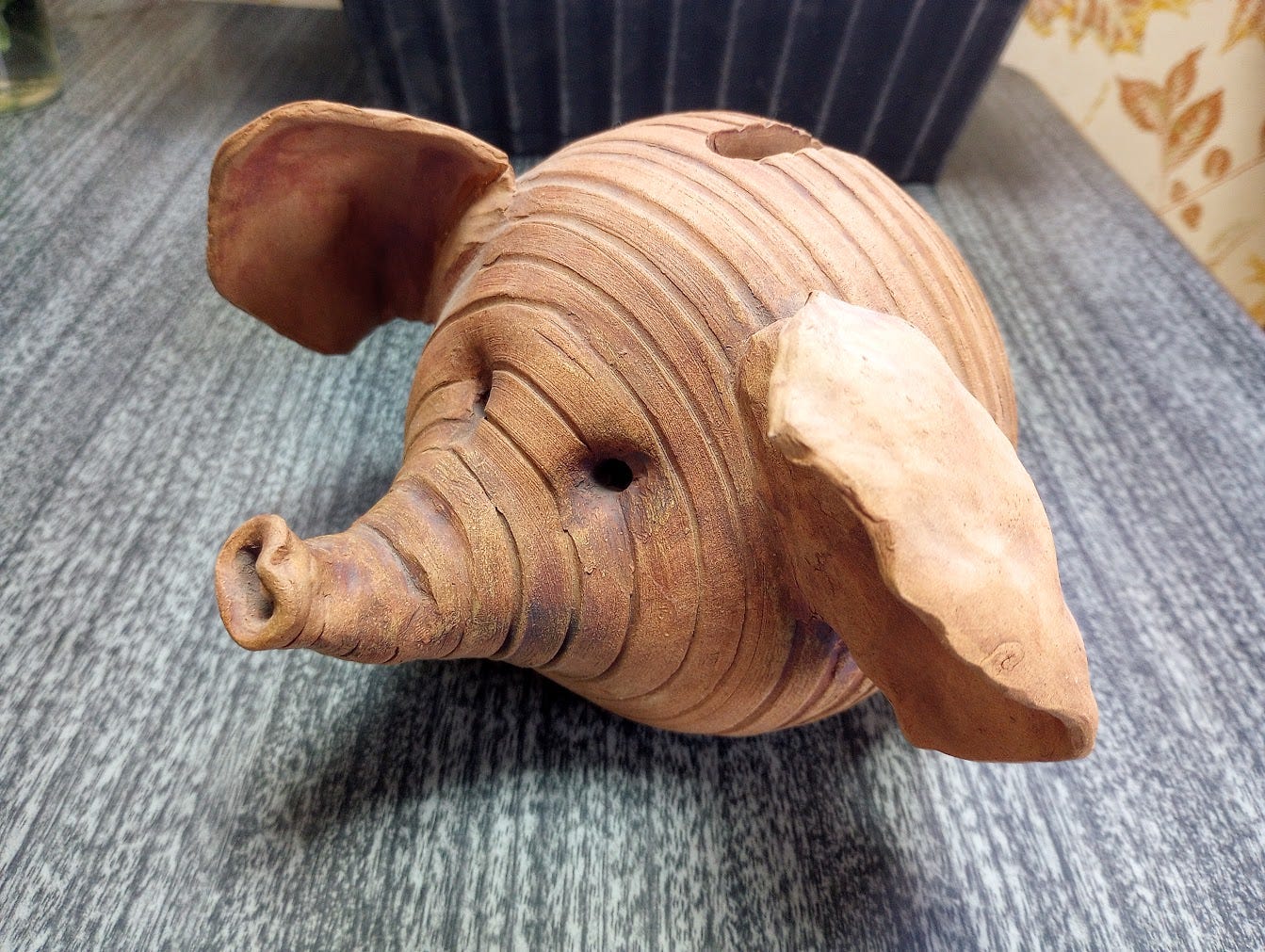
Old World camel adaptations for low humidity and low water environments are fairly unique in the animal kingdom. What is the speed of stubborn? the pace of life, of survival.

Pack snacks and water…. For health and wellness wherever you find yourself.
April Fool’s Day. This is a fantasy story. Fiction for a new era.
Hospital ER vs. the Sahara Desert: A Hydration Comparison
Or: How to Disable an Elderly Patient in 6 Easy Steps
1. The Standard of Care
Sahara Desert:
Protocol: Locals (and camels) know dehydration requires water.
Efficacy: 10/10. No wrist drops reported.
Henry Ford Hospital ER (Jackson, MI):
Protocol: Withhold IV fluids for 4+ hours despite:
R63.1 (Adult dehydration)
E87.2 (Acidosis)
G56.3 (Radial nerve palsy, iatrogenic)
Efficacy: "Adverse events are normal." – Nurse Julia, laughing.
2. Pomegranate vs. Saline
Pomegranate Juice:
Dose: 2 oz.
Effect: Calms histamine storms, revives cognition.
Science: Polyphenols inhibit mast cell degranulation (J Agric Food Chem 2018).
Hospital Saline:
Dose: 500 mL dumped into tissue (not veins).
Effect: Tourniquet-like swelling → wrist drop.
Science: "Oops." – Journal of Iatrogenic Harm, 2025.
3. Legal Violations (For the Lawyers)
Michigan Penal Code §750.145c: Reckless endangerment of a vulnerable adult.
Joint Commission PC.01.02.07: Failure to assess nerve injury post-IV.
LARA Violation: Irradiating caregivers without lead aprons.
4. The Clown Car of Negligence - fiction or fantasy? Hard to know.
Timeline of Trauma:
~ 8:00 pm: Admitted for dehydration. Given zero fluids. Overheated in bedding and Velcro hand mitts. More cramped in a fetal position and almost non- responsive.
~ 9:00 pm: I asked repeatedly for IV or a cup of water. Doctor puzzled: "Why would anyone ask for... water?" [hyperbole, the doctor eventually agreed that IV fluids were applicable for the patient’s needs.]
~ 9:30-9:45 pm: IV placed with my calming help. Then a Chest X-ray (unnecessary), pelvis x-ray declined by me, due to patient fetal position and unnecessary value for Comfort Care needs. Bonus: Caregiver irradiated, lead apron not given to the patient or caregiver.
~ 10:00 pm: EKG done (unnecessary) IV fluid bag finally in the left arm IV. It helped, a lot, then giving water and an apple, by me helped even more, but I needed more food. Patient now calmly snoozing, saline dripping slowly, steadily, less than or about a third of the bag in the patient who is now pink and healthier looking and able to relax the cramped fetal position. It is amazing what needed nutrients can do for health status, pain and mental function.
~ 11:15-12:00: Second IV placed while caregiver out of the room buying picnic food for patient; no monitoring apparent, IV misplaced, half a bag dumps into the forearm extracellular tissue leading to→ gauze tourniquet → radial nerve compression → wrist drop.
~ 12:00-1 am: Pomegranate juice, almond butter and honey sandwiches, apple, patient finally not hungry but looking worse overall than when I had left her sleeping calmly at approximately 11:15 pm to go buy food.
~ 1 am: I noticed the bad IV and tourniquet tight white mesh gauze. Got Dr. to check it and he was dismissive, just fluid, a temporary issue. Said a nurse will remove it rther than immediately relieving the tourniquet pressure.
~1-2: Various attempts to get the nerve injury reassessed. Another nurse and floor manager dismissed it, not even seeming to see the nonfunctional wrist let alone describing it as a known adverse risk called Wrist Drop or compressed radial nerve injury, not calling for a neurology eval and only maybe documenting the observation on my insurance. At that stage I started taking names and photos as a cover up seemed to be happening, or blatant disregard for any typical standards of healthcare in my 1980s understanding of patient care. 2025, a fantasy?
~1:30 am: Discharged with nerve damage. APS called on the caregiver.
~ 3:00 am: Patient now trying to climb out of bed, ambulance late, 2:30am had been the estimate. I go to ask for a wheelchair to drive her home and am told the ambulance is here but the drivers are being briefed in the situation and why would I consider a wheelchair? I go back in the room, patient now closer to getting out of bed. Clown car team enters the room and are immediately made at me for having a patient climbing out of bed, as if I made her do that…. No it was the pomegranate juice and an 87-year history of traveling at the speed of stubbornness.
Crystal clear: Hospital ER are not used to patients getting better, or well enough to climb out of bed independently, with their current level or standard of care patients may not get out of bed again. They are used to patients laying in bed calmly, almost as if the patient is overheated, dehydrated, and going into worse metabolic crisis. It is hard to climb out of bed when dehydrated and being overheated to boot just speeds up the metabolic crisis or was that circus? Accurate spelling is a challenge.
.
Fantasy Image: Team work makes the dream work.
Crystal Clear part two - interestingly, the fictional Adult Protective Services officer, was very interested in the question of whether there was caregiver neglect of the care of an elderly person but was not at all interested in looking at the nerve injury that left that same person now unable to self-feed normally (for her) or to push herself up in bed or out of a chair.
Fantasy Image: Tiny venomous snake in the ER at Henry Ford Hospital?
If Adult Protective Services is about protecting the health of adults in care settings, then why doesn’t the care provided by Hospital ER staff concern the worker too? Is harm not harmful if applied with force by hospital staff who have no last names? Fantasy Nurses C, D, E? Dr. B? Dr. A? Anyone? Do adults only need protection from neglect or harm in non-hospital settings? Is medical neglect not neglect? Is withholding water and food from a hungry and thirsty person simply good care?
Rules for thee, but not for we.
5. How to Survive Henry Ford ER
Pro Tips for Future Visitors:
Pack:
Pomegranate juice (anti-inflammatory).
Scissors (to cut off their gauze tourniquets). *Not going to get past the front desk guards, good luck anyway. Plastic children’s scissors probably wouldn’t work.
A camel (for moral support).
Avoid:
Asking for water.
Expecting neurology consults for visible nerve damage.
6. The Takeaway
"In the Sahara, dehydration is solved with water.
[and salty magnesium and polyphenol rich snacks - sumac/Zata’ar sprinkled on with a dash of roasted sesame seeds and salt. Edible sumac is like pomegranate peel in disguise - higher salicylate caution.]
At Hospital ER, it’s solved with radial nerve injuries and APS reports.
Choose your desert wisely."
P.S. For the hospital’s Yelp review:
⭐ "Disabling elderly patients since 1915.
1/10 would not recommend."
Footnotes for the Furious
ICD-10 Codes: G56.3 (Wrist drop), T80.89XA (IV injury).
Report Them: Michigan LARA Complaint Portal.
Read More: Girl Scout Handbook, 1972 Ed. (Chapter: "How Not to Torture Patients").
If an elderly, dying person is hungry, is it Comfort Care to provide food? Or water if they are thirsty? Or is that some sort of weird abusive behavior that has no place in Hospital ER standard of care? A desert, with no water, and a pattern of overheating a patient and failing to monitor IV fluid intake leading to edema, When it rains, it pours, a disastrous flood of the right forearm leading to a mentally disabled person becoming a physically disabled person with only one good hand instead of two.
There appears to be a fantasy vampire infestation at Henry Ford Hospital ER. Two doctors had agreed with my strategy that the wisest route to maintaining a patient’s standard of health may indeed be to avoid hospitals. Word to the wise and to camel lovers everywhere
IV fluids or Pedialyte type balanced rehydration beverages (or 1/4 cup Pure Maple Syrup in 1 liter of water, limit to 1/2 cup syrup per day for an average adult and swap the carbohydrate calories for a bread group equivalent or fruit serving), IV fluids and electrolyte drinks help prevent or treat the muscle pain, fatigue, and other disoriented thinking symptoms by providing balanced electrolytes. Providing the electrolyte replenishment to someone in metabolic acidosis from severe dehydration can be life-saving and pain reducing and calming and rejuvenating fairly rapidly. Triage care available anywhere practically, if the person is reported to not have consumed enough liquid recently (4 oz per day times two days of deep sleep, as an example) - then their pain and muscle cramps are likely visible as a stiffened body with severe pain vocalizations when trying to move them. Unbending the stiff limbs is not really possible.
Sahara Desert - severe dehydration risk. Local residents and adapted species (Old World camels) know how to conserve water and reduce risk of dehydration and the humans likely know how to treat it and so do the camels…. find water and drink it.
Finding water for a patient at Hospital Emergency Department is maybe harder than in the Sahara Desert. Unless you thought to bring a cup, you’ll be drinking from your cupped hands by the little sink. Water is present, but what about the patient in bed, cramped in a semi-fetal position whose intake paperwork clearly states “IV fluids” as desired for the patient.
Let’s pretend the patient is my mother and this just happened two nights ago. The power of imagination seems unlimited, however a) I never imagined that the level of current care seems to have no training on the concept of “dehydration”, “stabilizing a frail elderly patient (or anyone with a circulatory system… humans)”, “IV fluids treated as contraband that a drug-seeking person might somehow use illicitly and has no right or need to ask for at a health care emergency department”.
“Truth is stranger than fiction, because fiction has to make sense (or no one would buy the book)” - attributed to Mark Twain, stated similarly in earlier literature by Lord Byron. Paraphrased here from either original text.
Scenario, caregiver (me), is questionably restating multiple times a need for the patient to get rehydrated but not over hydrated as that had already happened two years ago at the same emergency department, along with overheating her. (Cancer onset occurred or was noticed after that trip to the ER for a fall with hypothermia (wandered into the garage and I hadn’t found her right away).
Runaway behavior in Alz. or young folks may involve histamine excess mania which can be reckless and excited or paranoid and suspicious, but either might have a sudden desire to move away, to run away, or to fight back, taking it as a threat rather than help.
Being a camel, tip, pack your own water, and a way to use it (cup). I had an apple with me and managed to get a glass of water “for myself” from a staff member, who stayed in the room for a bit kind of seeing that the water was for me <yep, drinking it right now>, “Thanks, I was thirsty.” Meanwhile the visibly dehydrated elderly patient with IV fluids on the intake form… when I arrived after the ambulance left, a little later. I had silly faith that rehydration would be provided, maybe starting immediately in the ambulance.
Fantasy or reality? Only the pomegranate knows for sure.
Fantasy Image: What price, the ability to eat and enjoy your own bowl of pomegranate tapioca pudding?
My Girl Scout training was sufficient to inform me of the risk of a tourniquet situation. I had no scissors so I started looking for the gauze ends and picking it apart knot like, unweaving the v shaped criss-crossing pattern causing intense compression in a number of tight strips from half a bag of fluid dumping into the extracellular tissue. The fantasy nurse was mad at me for interfering. I had just got it all unwound as she entered the room and I stepped aside as she removed the IV from the right arm and (angrily) left. I massaged the arm a little and thought about it. I had fed apple and avoided the IV in the left arm earlier… now a bad one was taken out of the right arm. I looked closer at the poor arm and limp wrist. A new bruise and two little puncture marks with no bandage were at the corner of the damaged wrist, inner edge near the thumb side but on the wrist, the damaged wrist. What had happened while I was out buying picnic supplies?
Nowhere in patient care does it say that a bag of saline fluid must be emptied into a patient as if the patient is an automobile in need of a quart of radiator fluid, just pour it in. “Monitoring” a patient and “evaluating” them for their individual needs, requires, a) monitoring rather than abandoning a newly placed IV in a patient with Alzheimer’s dementia who apparently had already dislodged one IV. Did the patient maybe only need the half bag to get revived but not edematous?
Is it a fantasy? Image: Radial nerve injury, Wrist Drop, but what is the bruise with two puncture wounds but no bandage? Invisible to four fantasy staff members whatever it is.
“What price to pay for bad wisdom?” - Suzanne Vega, Bad Wisdom song lyric.
There was a resounding sound of silence as the team grouped around repeating that last names are not given for fantasy nurses.
Fantasy Image: Hand sculpted bust of a baby, by my mother, not a fantasy.
When the standard of care includes adverse events as normal and not even visible, then harm will be the standard.
If a patient is harmed by the standard care, then, apparently no harm exists, as the patient was simply standard cared… not harmed. Simply disabling injury is routine, expected even, not treated, not document.
When the standard of care is random harm without consequence to the nameless fantasy nurses, but the doctors supported it, then was it “harm” or was it just another disabled patient? Next in line, step ahead quickly, we are here to standardize you into a fall risk protocol, or some other protocol involving machines that go ‘bing’.
Fantasy Image: Clown head sculpture made by my mother to make into a stuffed sawdust style old-fashioned China doll, fabric body instead of all China, to be sewn, stuffed and added later, sewn onto the premade holes at the bust neckline. Where are mental and physical health connected? At the neck. Where is mentality clarity found? In good hydration and good nutrition and that included polyphenols.
The room-to-room irradiation is just a bonus for patients in room 27 or 31 or 28 or 30. Pomegranate or Lemon Balm or chlorella or ginger might help the body recover from radiation effects, just FYI, for Old World camels who have to drink radiated water at old nuclear test sites. The camels seem fine. Dr. Arrigo was fine.
Fantasy Image: I thought I saw a blonde squirrel, what a fantasy!
Old World camels have ellipse shaped red blood cells to be able to survive more dehydrating situations. Humans do not. Humans should maybe avoid hospitals as the standard of care is not as good as a 1970’s era Girl Scout guide book when it comes to emergency care needs.
Complications associated with Tourniquet use, paywall for full access, video and some summary info on the risks - tissue death… nerve damage… disability… patient death… (study.com)
Girl scouts used to do more than sell cookies. I don’t know how good the current guide book is but the old one covered basic emergency health care including dehydration, sunstroke, and tourniquets use in an emergency and risk of unneeded use.
The doctors seem to need to invest in a 1970’s era Girl Scout guide book. And review LARA policies on adverse event reporting requirements for doctors who have hospital privileges,
Fantasy Image: December 25, 2022, a Christmas love story that a low histamine diet restored to peace. What price is a wrist worth? Strength to hold a weaker loved one’s hand? For almost 16 months? What price is knowledge to provide a low histamine diet to someone genetically ill equipped to process it?
Disclaimer: This information is being provided for educational purposes within the guidelines of Fair Use and is not intended to provide individual health care guidance.





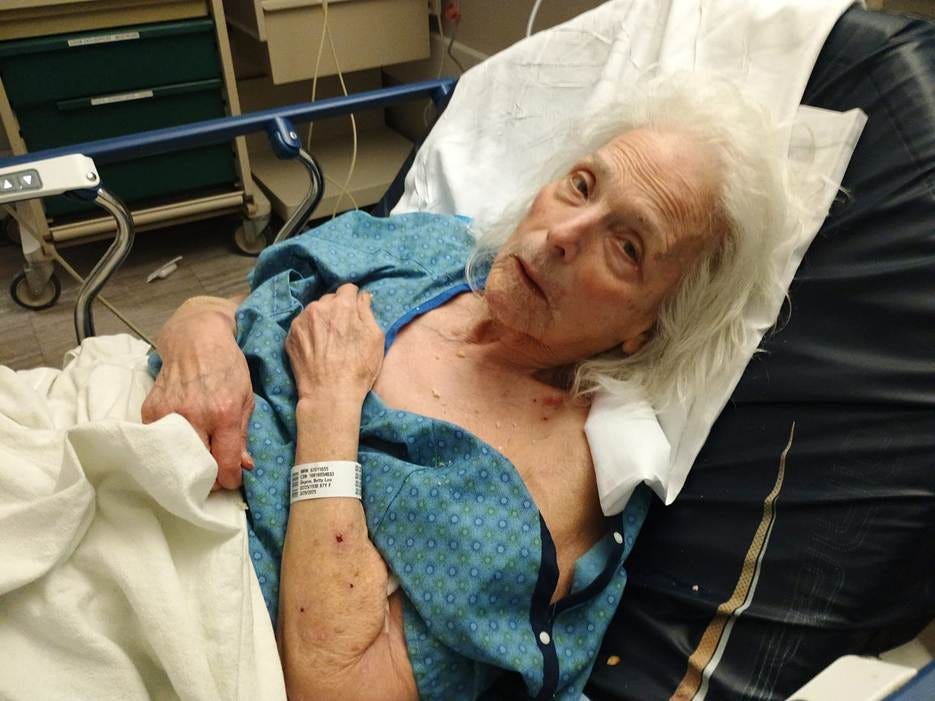
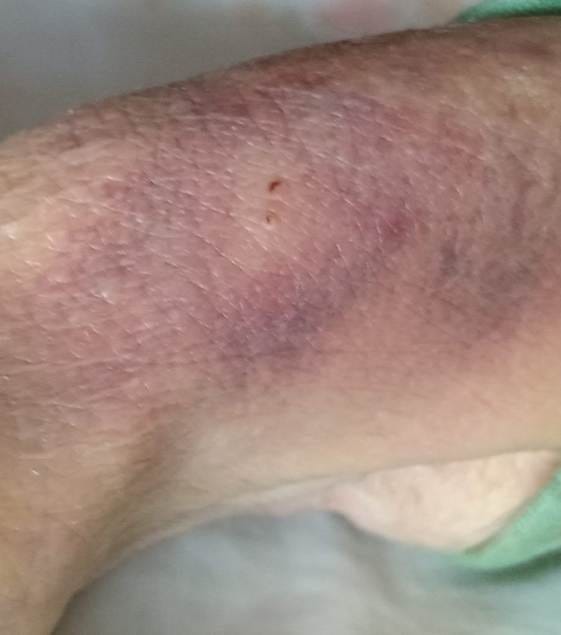
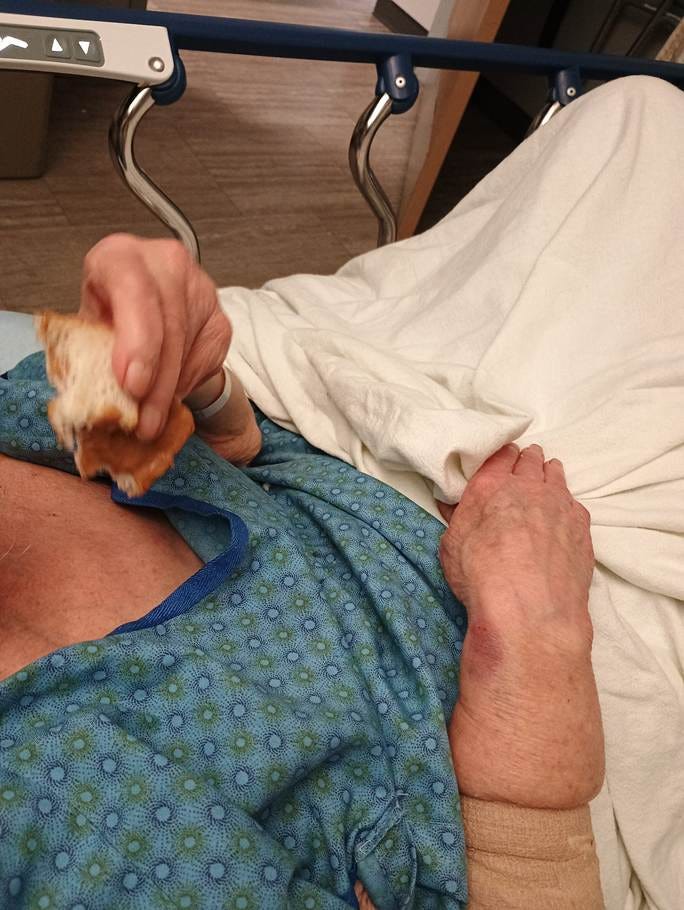


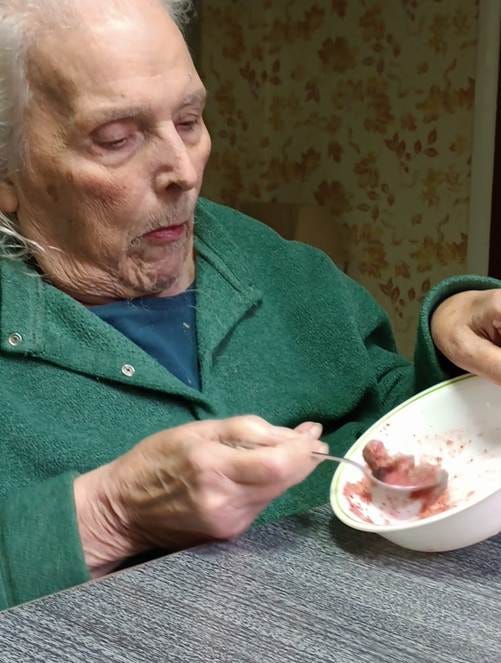

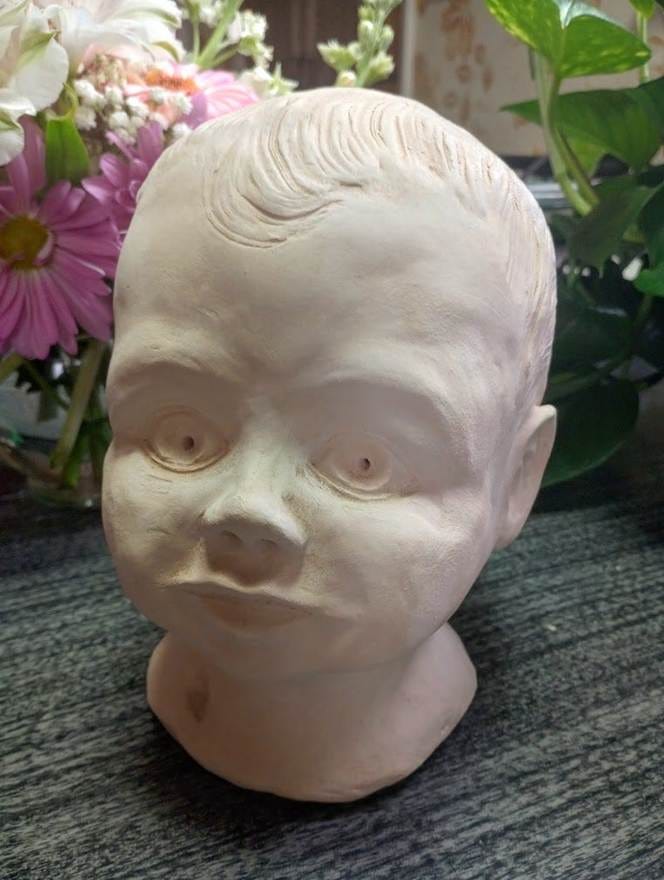



I am so very sorry. I can't see hospitals as anything but death camps. People talk about Canada and their MAID, but I think it's even worse here. They do the same thing here but it's hidden. They pretend they're trying to help patients, but they're really just helping to kill them. I saw it with my mother, years before covid. Unfortunately, I didn't know much about what was standard of care or what to look out for. She had a had a stroke, but they spent I don't even remember how long testing her for seizures. Nobody would listen to me. Most of the nurses were nicer than what you experienced, but they hadn't been lauded as "HEROES" yet and given standing ovations everywhere they went. You and your mother are in my prayers.
I understand, especially if you're looking at legal remedies. I'm not sure what would be best, but I wish you the very best outcome.